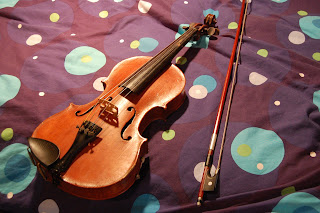Well, fantastic. I put the album online last Friday and a few people have heard it. Feedback from my friends has generally been good; so far no one has felt the need to tell me they didn't like it. There doesn't seem to be a clear-cut best song, as the nine people who've mentioned theirs to me have picked six different songs. Which is too bad in that I don't feel confident in heavily promoting a single from it, but good in the sense that it means I've done solid, consistent work. As I get better on future releases I can just try to up this average quality.
Speaking of which, I'm writing for the next album, which I fantasize I can be finished with by the end of February. Being able to produce an album's worth of material from scratch in three months would be a great turnaround time. That way I could do three a year, and if I can complete thirty-plus songs that I'm proud of, you'd think there'd be a dozen in there that anyone would be proud of, that would stand up to a proper commercial release (with some professional remixing).
Even if this is just an informal release, I'd like to try to promote it a bit, at least to get a sense of how good it really is and how far I still have to go. My promotional goal for this one is really just to get on a few people's musical radar who don't already know me personally. And to make some industry contacts, at least find some people I can annoy again when I'm done the next one. I also want to contact some of the artists that inspired me while making this last one, with no specific goal except that if one of them happened to like my stuff it would be gratifying. So I suppose promoting this album is about letting some people know I'm throwing my hat in the ring, and testing the strength of my material. We'll see what comes of it!
Speaking of which, I'm writing for the next album, which I fantasize I can be finished with by the end of February. Being able to produce an album's worth of material from scratch in three months would be a great turnaround time. That way I could do three a year, and if I can complete thirty-plus songs that I'm proud of, you'd think there'd be a dozen in there that anyone would be proud of, that would stand up to a proper commercial release (with some professional remixing).
Even if this is just an informal release, I'd like to try to promote it a bit, at least to get a sense of how good it really is and how far I still have to go. My promotional goal for this one is really just to get on a few people's musical radar who don't already know me personally. And to make some industry contacts, at least find some people I can annoy again when I'm done the next one. I also want to contact some of the artists that inspired me while making this last one, with no specific goal except that if one of them happened to like my stuff it would be gratifying. So I suppose promoting this album is about letting some people know I'm throwing my hat in the ring, and testing the strength of my material. We'll see what comes of it!






























